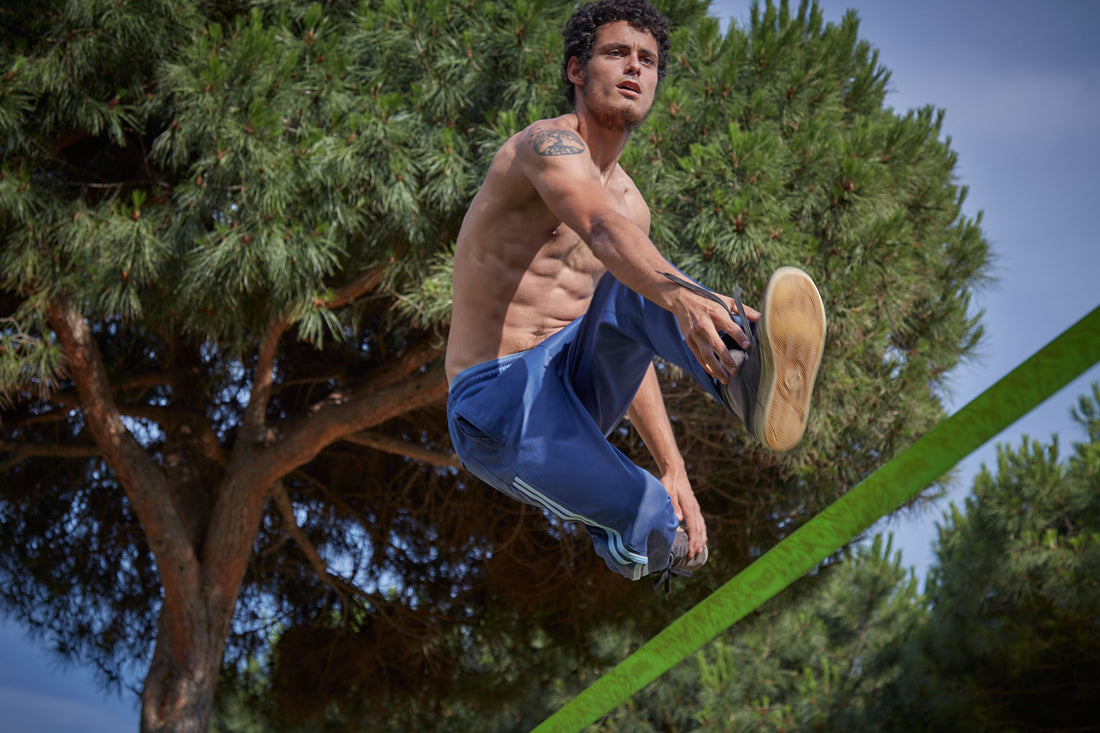The art of walking and balancing on a slackline is both physically and mentally great for you. And at Macaco we believe the benefits of slacklining should be for everyone, not just elite climbers and adventurers! In case you were wondering whether to give slacklining a go, we’ve detailed just some of the main benefits below!
- Improves balance
Slightly obvious, but yes, slacklining is brilliant for improving your balance! It’s in the name, but slacklines are set up with way more slack than a conventional tightrope or wire. The line is dynamic – creating a lot of stretch and bounce – meaning you need a lot of strength and balance to stand and even more to walk. - Builds core strength
Hand in hand with balance comes core strength. Without strong core or ‘trunk’ muscles (transverse abdominals, multifidus, diaphragm, pelvic floor, and many other deeper muscles) you’re more likely to suffer from chronic back pain, and find it hard to perform standard daily activities. What’s more, if you’re into your fitness you know that you need strong core muscles to be able to perform even basic activities correctly such as running!Slacklining is perfect for this as you need to engage your core to be able to balance. A core workout without the sit-ups! - It’s a full body workout
It’s not just your core that gets a workout. Your legs, back and shoulders need to be engaged at all times when slacklining which creates a surprisingly challenging workout. We’ll be posting some example fitness routines over the coming weeks so make sure your keep a look out for some fitness inspiration! - Improve your focus
To be able to walk along a slackline, especially when first starting, you need to have the ability to focus on each and every step. The more you practice slacklining the more you’ll improve your focus, which will translate into every aspect of your daily life. Work promotion here you come. - It helps you relax
We’ve all heard the benefits of mindfulness. It can improve physical health (help relieve stress, lower blood pressure etc.) and mental health (helping combat depression and anxiety disorders). Once you’ve mastered the art of slacklining it’s a brilliant mindfulness technique. Often described as moving meditation where you have to clear your mind to keep focused enough to get to the other end of the line. Why not give it a go when you’re feeling stressed? - Injury rehabilitation and prevention
Slacklining isn’t just great for improving fitness, but can also help treat and prevent sports injuries. Charles P. Gabel, PhD and Simon Mendoza, PT, have written a paper on the subject and outline a 4 stage, 20 step programme using the slackline, including exercises such as single leg stands and progressive squat combinations.

